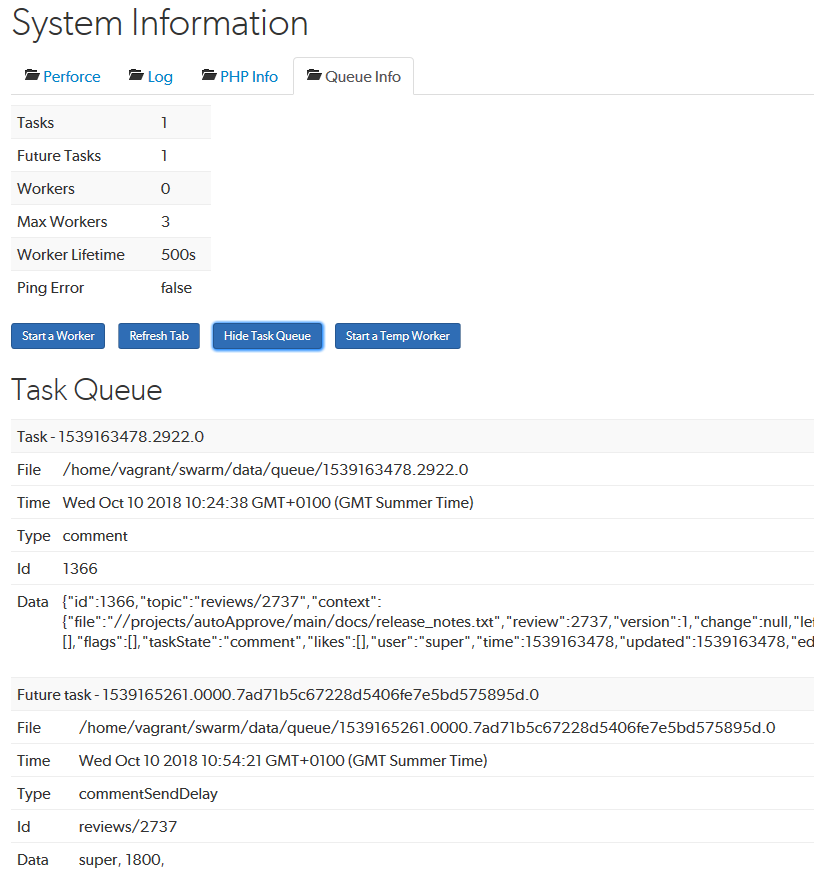System Information
The System Information page is available to users with admin or super privileges on the About Swarm dialog.
Click the System Information link on the dialog to display the System Information page.
The System Information page provides details that can be useful to Perforce support engineers when you ask them for assistance.
Perforce
The Perforce tab provides information similar to the p4 info command.
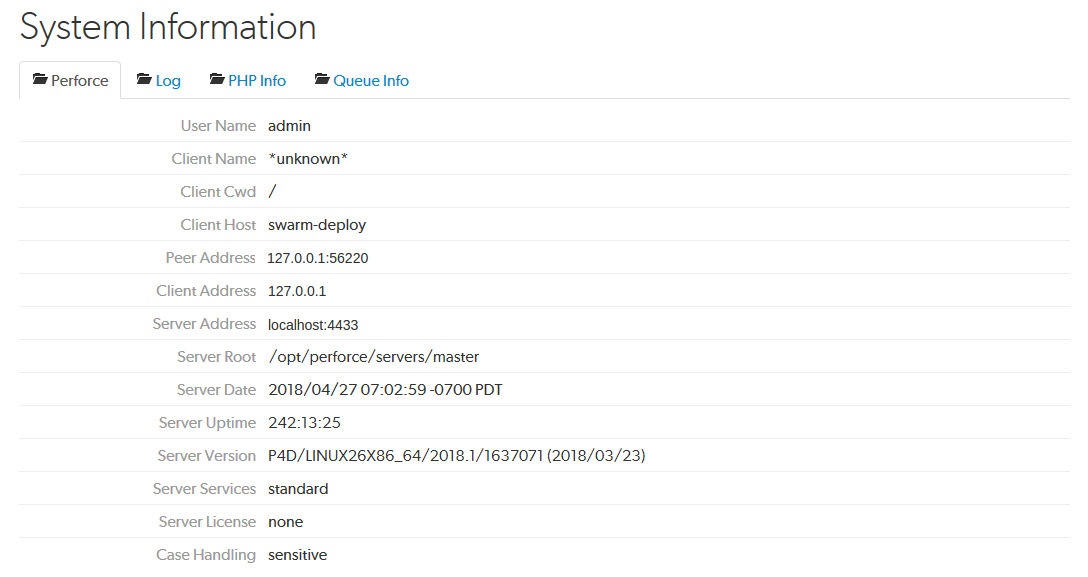
Log
Click the Log tab to display the most recent entries, up to 1 megabyte, in Swarm's log file, which resides in SWARM_ROOT/data/log. Review the logging levels for Swarm logs to ensure that the entries you want to see are included.
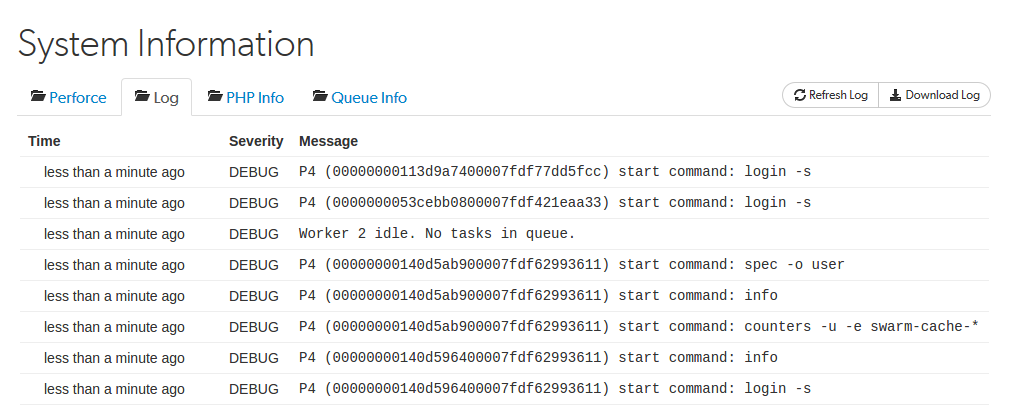
If your log entries include a critical error, an arrow appears:

Click the error to display the stack trace that accompanies the error:

Log tab buttons:
- Refresh Log button: click to load the latest log entries, up to 1 megabyte.
- Download Log button: click to download the log and all of its log entries.
If your log entries include a critical error, an arrow appears:

Click the error to display the stack trace that accompanies the error:

PHP Info
Click the PHP Info tab to display PHP's own information display generated by executing phpinfo(), PHP's internal diagnostic display.
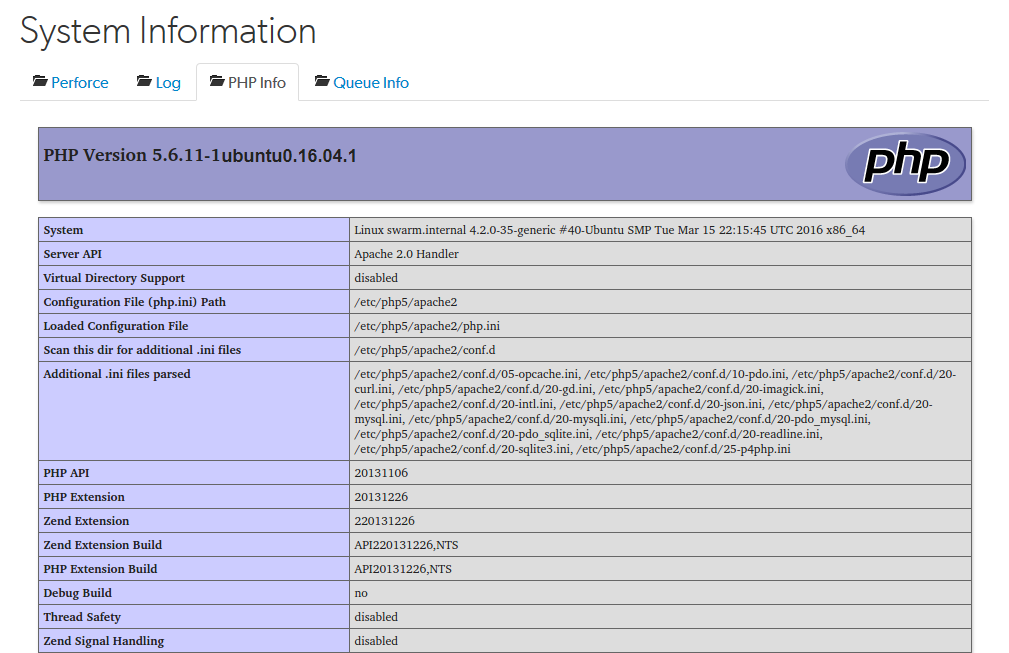
Queue Info
Click the Queue Info tab to display the Swarm task queue information.
Workers should be started automatically using a recurring task. For instructions on how to set up a recurring task to spawn workers automatically, see Set up a recurring task to spawn workers.
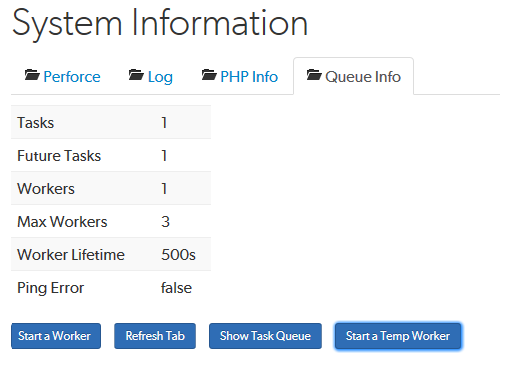
- Tasks: displays the number of tasks in the queue.
- Future Tasks: displays the number of future tasks in the queue. For example, when a user is making comments, the comment notification is delayed by 30 minutes by default. This is a future task.
- Workers: displays the number of workers available to service tasks.
- Your workers are not being created automatically. For instructions on how to set up a recurring task to spawn workers automatically, see Set up a recurring task to spawn workers.
- To process the current task queue while you get your recurring tasks working again, click Start a Temp Worker. This is a quick way to get Swarm running again while you fix the problem.
- Max Workers: displays the maximum number of workers that are allowed. The default is three.
- Worker Lifetime: displays the worker lifetime that is configured. The default is 595 seconds (10 minutes less 5 seconds).
- Ping Error: not used.
If the number of Workers is 0 (zero):
Queue Info buttons:
- Start a Worker button: click to manually start a new Swarm worker. The new worker will only last for the configured Worker Lifetime. If the number of workers running matches the configured limit, the new worker is not started.
- Refresh Tab button: click to refresh the queue information in the tab.
- Show Task Queue button: click to display the Task Queue information. When the task queue is displayed the button changes to Hide Task Queue. The task queue shows more information about the tasks and future tasks in the queue.
- Start a Temp Worker button: click to manually start a Swarm temporary worker. Typically you use a temporary worker to process the current tasks in the queue while you fix the recurring task that automatically spawns the workers.
If your recurring task has stopped working and you need to process the task queue while you get it working again, start a temporary worker by clicking Start a Temp Worker. This is a quick way to get Swarm running again while you fix the problem.
This is a special Swarm worker that is not subject to the worker lifetime setting and will not stop until it has processed all of the tasks in the current queue or one of the tasks fails.
Task Queue
Click the Show Task Queue button to display the tasks in the Swarm queue.
